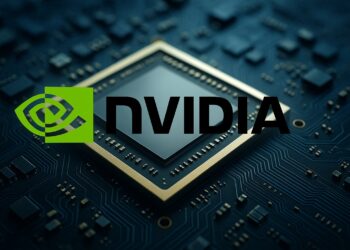Key Takeaways
- Royalties at new highs: Broader adoption of Armv9 and higher-value chips in data center, mobile, and edge lifted the effective royalty rate.
- Licensing surge: High-value deals and Compute Subsystem (CSS) traction shortened partners’ time-to-silicon and expanded Arm’s design-in pipeline.
- AI as a structural driver: Hyperscalers and device makers are prioritizing performance per watt, an area where Arm’s architectures and tools excel.
- Diversification beyond handsets: Data center, automotive, and PCs helped smooth handset cycles and improved mix quality.
- Confident outlook: Management pointed to continued growth, supported by a robust backlog of licensing opportunities and expanding royalty base.
What Drove the Quarter
1) Royalty Flywheel: Armv9 Mix Shift
Partners continue migrating to Armv9, which carries higher value due to advanced features, security, and efficiency. As these cores spread from smartphones into laptops, servers, and connected devices, Arm’s per-chip royalty economics improve—compounding with unit growth.
2) Licensing Momentum: CSS Becomes a Catalyst
Arm’s Compute Subsystems (CSS)—pre-validated blocks that bundle CPU clusters, interconnect, memory controllers, and security—accelerate partner roadmaps. More customers choosing CSS means faster tape-outs, larger deal sizes, and a wider installed base that seeds future royalty streams.
3) Data Center & AI Efficiency
In cloud AI, perf-per-watt is king. Arm-based server CPUs and custom silicon built on Arm cores are winning deployments where energy and density constraints dominate. That trend supports both near-term licensing and longer-term royalty expansion as workloads shift toward efficient compute.
4) Mobile Rebound with On-Device AI
Flagship mobile platforms are emphasizing on-device AI. Arm CPU and GPU roadmaps target sustained performance gains at lower power, enabling longer sessions and richer models on the edge—supportive for premium handset ASPs and unit stabilization.
5) Broader End-Markets
Automotive (ADAS, domain controllers), embedded/IoT, and Arm-based PCs continued to diversify revenue. This reduces reliance on any single market and underpins steadier growth through cycles.
Guidance & Investor Lens
- Licensing cadence: High-value deals can be lumpy; the pipeline suggests continued interest in CSS and next-gen core families across data center and mobile.
- Royalty rate uplift: Mix matters more than units. Tracking Armv9 penetration and data-center shipments is key to sustained margin improvement.
- Software moat: Toolchains, compilers, and a unified developer ecosystem increase platform stickiness and raise switching costs over time.
- AI power bottleneck: With power availability now the limiter, Arm’s efficiency narrative resonates across cloud build-outs and edge devices.
Risks & Watchouts
- Deal timing volatility: Large licenses may shift between quarters, creating optics noise despite healthy demand.
- Competitive responses: x86 and RISC-V alternatives could pressure pricing in targeted workloads.
- Macro sensitivity: Handset and consumer cycles still influence royalty volumes, even as mix improves.
- Supply-chain and node availability: Foundry and packaging constraints can affect partner ramps and royalty conversion.
Valuation Framing (Qualitative)
Arm’s model blends recurring royalties with front-loaded licensing. As CSS adoption scales and Armv9 proliferates, earnings power skews upward with higher-quality mix. For long-term holders, the thesis centers on converting a deep design-win pipeline into durable royalties while compounding the software and ecosystem moat.
FAQ
What stood out this quarter?
Record royalties and a strong step-up in licensing—driven by CSS wins and broader Armv9 adoption across data center, mobile, and edge.
Is AI really moving the needle for Arm?
Yes. Power-efficient compute is the gating factor for AI scaling. Arm’s perf-per-watt advantages support share gains in cloud CPUs and on-device AI.
How should investors track progress next quarter?
Watch licensing signings (especially CSS), indicators of Armv9 penetration, data-center rollouts, and any color on software/toolchain adoption that deepens platform lock-in.
What could derail the story?
Timing shifts in big licenses, competitive pricing, macro weakness in consumer devices, or supply constraints that delay partner ramps.
Bottom Line
Arm’s latest print reinforces a high-quality growth setup: royalties at record levels, licensing momentum led by CSS, and AI-driven efficiency demand across cloud and edge. With a deep pipeline and expanding ecosystem, Arm looks positioned to sustain growth as its architecture becomes the default choice for performance per watt.
Disclaimer
This article is for informational and educational purposes only and does not constitute investment advice, an offer, or a solicitation to buy or sell any security. Investing involves risk, including possible loss of principal. Always conduct your own research and consider consulting a qualified financial advisor before making investment decisions.






